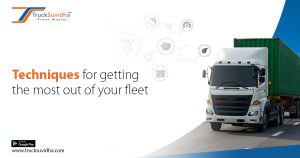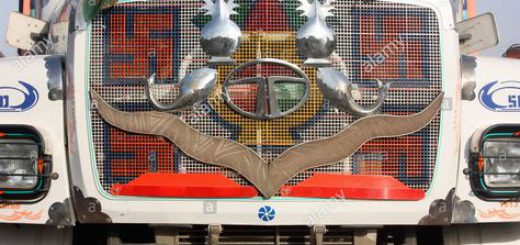Techniques for Getting the most out of your Fleet Utilisation
Consider yourself a fleet manager who needs to schedule the routes for delivery trucks for the day. To ensure that orders reach your clients on time, you must take into account additional constraints in addition to the distance, such as order size, expenses, orders at each drop, and time to load and unload. Isn’t that laborious? But how can this scheduling procedure be made to run more smoothly while still getting the most out of the fleet utilisation? Utilising the full capability of the fleet holds the key. This article is for you if you wish to operate your fleet effectively by getting the most out of it at minimal expense. Let’s drive in now, without further ado!
Fleet utilisation: what is it?
The measurement of fleet performance and use is known as fleet capacity utilisation.
But is the solution really that straightforward? For each location and each class of vehicle, there are optimal fleet utilisation times.
So if you ask ten fleet managers to define something, you can get ten different replies. Demand and fleet capacity are contrasted in fleet utilisation. Daily changes in capacity and demand mean that different approaches are required to manage them.

Why is fleet utilisation so important?
A well-utilized fleet not only increases production and lowers costs, but also increases profitability. Here are some of the reasons why fleet utilisation is critical.
- Why is fleet utilisation so important?
A well-utilized fleet not only increases production and lowers costs, but it also increases profitability. Here are some of the reasons why fleet utilisation is critical. - Ensure optimal fleet utilisation.
A parked truck merely generates storage fees. Furthermore, an empty running truck generates little revenue. Maximising vehicle capacity utilisation allows you to generate more money with less resources.
- Control delivery expenses.
Fleet managers must concentrate on delivery costs in order to reduce needless costs connected with delivering orders. - The optimal fleet size for operations.
Analysing fleet capacity utilisation assists a corporation in right-sizing its fleet by providing answers to two essential questions:- How many automobiles are required to meet business demands?
- What are the ideal miles travelled (during a specific time period, such as a day or week) to ensure that a vehicle is properly utilised?
- Four components of a properly sized fleet.
- Is there a set number of trucks that can meet all delivery requirements?
- car location- Is a car accessible to drivers within a short (er) distance?
- Right type/class of vehicles- Do you have the right class/type of vehicle to meet delivery requirements?
- When are the vehicles available to drivers when they are assigned a delivery task?
How Can We Improve Fleet Utilisation?
Increasing fleet utilisation will allow you to do more with fewer resources and boost your fleet’s overall productivity. To get you started, we’ve compiled a list of best practices.
- Determine the Ideal Fleet Size
An enormous fleet will result in unnecessary and exorbitant costs. In contrast, relying on a limited fleet of vehicles will not allow you to meet customer demand. The fleet utilisation procedure can help you identify the appropriate size of your fleet. Right-sizing your fleet helps ensure that you can satisfy client demand while keeping expenses down.
- Make Use of Technology to Increase Visibility
To boost fleet utilisation, fleet managers frequently employ telemetry technology and fleet management software. There are numerous options on the market that can help with fleet optimisation. However, next-generation technology based on AI and machine learning is drastically altering how fleet firms maximise production levels. Tourmo’s Workforce Operations solution will enable you to transform your mobile workforce operations through the use of AI technology and automated workflows, resulting in benefits such as:
- Increased productivity as a result of AI-driven insights that combine easily with configurable, automated workflows
- Because of on-site process management and issue reporting, your workers or a third party may finish more work with fewer errors.
- Improved visibility of work being done through the use of real-time data, offering a complete picture of your operations to identify and handle issues remotely.
- Automate Your Strategy’s Implementation
Previously, collecting, analysing, and exploiting data posed a significant problem for fleet organisations, which frequently lacked the time, resources, and manpower required to capitalise on their obtained data and take the necessary action to increase performance levels.
- Consider Preventive Maintenance.
An ineffective fleet utilisation strategy frequently results in downtime. However, you may simply avoid such problems by having your vehicles serviced on a regular basis. To avoid unforeseen breakdowns and repairs, you must ensure that every functioning vehicle is in good shape. You should request that your staff develop preventive maintenance routines in order to extend the life of your automobiles. This can be difficult, but putting in a little time and effort can help you stay on track.
Your fleet managers can use odometer readings or hourly intervals to establish service reminders and receive notifications about routine maintenance tasks. These reminders eliminate all assumptions and suppositions, increasing fleet productivity overall.
Also Read: Tips for Buying Fleet Vehicles at the Best Price
Conclusion
With everything mentioned above, you should have a good idea of how to enhance fleet utilisation in today’s digital age. Implementing these tactics will allow you to fine-tune your efficiency criteria and track the performance of your vehicles in real-world, controlled conditions. It will assist your organisation in dealing with unexpected last-minute developments and growing tremendously. It will motivate your fleet managers to pivot and iterate quickly, while also improving their decision-making ability.




Recent Comments